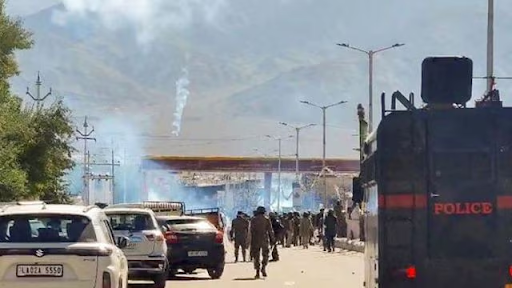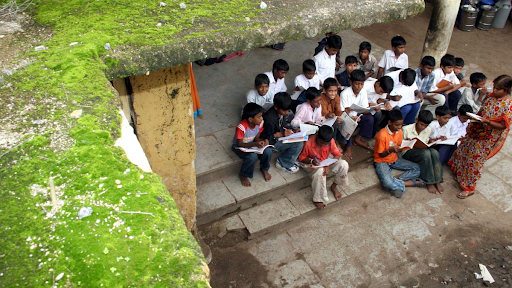





Copyright infringement not intended
Context: Karnataka Governor Thaawarchand Gehlot’s sanctioning of Chief Minister Siddaramaiah’s prosecution highlights the complex blend of legal discretion and political considerations.
Details
Understanding the Sanction Process
In India, before a public servant, including a Chief Minister, can be prosecuted for alleged corruption, several legal steps must be followed.
The Current Case: siddaramaiah's Sanction
Key Cases and Precedents
|
Tamil Nadu: Jayalalithaa’s Case (1995)
|
●One of the earliest cases involved Tamil Nadu Governor Marri Channa Reddy and Chief Minister Jayalalithaa. ●In 1995, the Governor granted sanction for her prosecution on corruption charges. Jayalalithaa challenged this decision, arguing that it should have been based on the aid and advice of her Council of Ministers, rather than the Governor's discretion. ●The Madras High Court upheld the Governor’s decision, but the Supreme Court never fully addressed whether the Governor should act independently or on the advice of the Council of Ministers. ●Jayalalithaa withdrew her challenge in 2002 after being acquitted of the charges. |
|
Madhya Pradesh: Ministerial Sanction Case (2004) |
●In 2004, the Supreme Court dealt with a case where the Governor of Madhya Pradesh granted sanctions to prosecute two Ministers despite the Cabinet’s refusal. ●This case is crucial because it established a precedent that the Governor could override the Cabinet if there was sufficient evidence. ●The Supreme Court supported the Governor’s decision, emphasizing that the rule of law must be upheld even if it means going against the elected government’s wishes. This precedent was set in subsequent cases, including those involving Chief Ministers. |
|
Karnataka: siddaramaiah's Case (2023) |
●Recently, Karnataka Chief Minister Siddaramaiah faced a situation where Governor Thaawarchand Gehlot granted sanction for his prosecution related to alleged irregularities in land allotments. ●Siddaramaiah and his supporters argue that this decision is politically motivated and compromises democratic processes. ●The Governor’s decision is based on the precedent set by the Madhya Pradesh case 2024. |
The Role of the Governor
The Governor’s power to grant or deny prosecution sanction is rooted in legal and constitutional provisions but is often viewed through a political lens.
Challenges and Considerations
GOVERNOR
Powers and Functions of the Governor
|
Executive Powers
|
●Formal Actions: All executive actions of the state government are taken in the Governor’s name. This is more of a formality, with the real executive powers resting with the Chief Minister and the Council of Ministers. ●Rules and Procedures: The Governor can make rules to specify how official orders and other instruments should be authenticated. This ensures proper governance and procedural clarity. ●Business Transactions: The Governor can create rules to streamline the transaction of state government business and allocate responsibilities among ministers. ●Appointments: The Governor appoints the Chief Minister and other ministers. These appointees hold office at the Governor's pleasure.
●Information and Recommendations: The Governor can request information about state administration from the Chief Minister and can require the submission of certain matters for the Council of Ministers' consideration. ●Emergency Powers: The Governor can recommend the imposition of the President's Rule in a state, which grants extensive executive powers to the President and effectively dissolves the state government. ● University Affairs: The Governor acts as the Chancellor of state universities and appoints Vice-Chancellors, playing a key role in higher education administration. |
|
Legislative Powers |
●Legislative Functions: The Governor can summon or prorogue the state legislature and dissolve the legislative assembly. These powers are crucial for managing the legislative calendar and ensuring smooth governance. ●Addresses and Messages: The Governor addresses the state legislature at the beginning of each session, outlining government priorities and policies. They can also send messages regarding bills and other legislative matters. ●Presiding Officers: In the absence of the Speaker or Chairman, the Governor can appoint members to preside over the proceedings of the state legislature. ●Nominations: The Governor nominates one-sixth of the members to the State Legislative Council, as well as one member to the State Legislative Assembly from the Anglo-Indian Community, ensuring representation for minority groups. ●Veto Power: The Governor can assent to bills, withhold assent, return bills for reconsideration, or reserve bills for the President’s consideration. This includes bills that might endanger the position of the state high court or violate constitutional provisions. ●Ordinances: When the state legislature is not in session, the Governor can promulgate ordinances. These ordinances must be approved by the legislature within six weeks of reassembly. ●Reports: The Governor is responsible for laying the reports of the State Finance Commission; State Public Service Commission, and Comptroller and Auditor General before the legislature. |
|
Financial Powers |
●State Budget: The Governor ensures that the Annual Financial Statement (state budget) is presented to the state legislature, a critical aspect of financial oversight. ●Money Bills: Money bills can only be introduced in the state legislature with the Governor's prior recommendation, giving the Governor significant influence over state finances. ●Grants and Advances: The Governor’s recommendation is required for any demand for grants. Additionally, the Governor can make advances from the Contingency Fund to cover unforeseen expenditures. ●Finance Commission: The Governor constitutes a Finance Commission every five years to review the financial status of panchayats and municipalities, ensuring fiscal decentralization and equitable distribution of resources. |
|
Judicial Powers |
●Pardons and Commutations: The Governor has the power to grant pardons, reprieves, and commutations for sentences related to state laws, providing a means of mercy and judicial review. ●Judicial Appointments: The Governor consults with the President on the appointment of judges to the state high court and makes appointments and promotions of district judges and other judicial officers in consultation with the state high court and Public Service Commission. |
Friction Between State Governors and Chief Ministers
Several factors contribute to the conflicts between state governments and Governors:
|
Case Study ●Tamil Nadu: The friction between Chief Minister MK Stalin and Governor RN Ravi highlights current tensions. In 2023, the Tamil Nadu government filed a case in the Supreme Court over the Governor’s refusal to reinstate a minister. This legal battle highlights the strained relationship between the state administration and the Governor’s office. ●Kerala: In 2023, Kerala’s government approached the Supreme Court after Governor Arif Mohammed Khan delayed giving assent to several bills. The state government argued that such delays were unconstitutional and lacked good faith, demonstrating how disagreements can escalate to judicial disputes. ●Jammu and Kashmir: In 2018, former Governor Satyapal Malik dissolved the Jammu and Kashmir Assembly despite indications of potential coalition formations. This move paved the way for the state’s bifurcation into Union territories, raising concerns about the use of powers for political purposes. ●West Bengal: Former Governor Jagdeep Dhankhar’s public criticism of West Bengal’s law and order situation and political violence created friction with Chief Minister Mamata Banerjee. Such public statements can exacerbate tensions between the Governor and the state government. |
Way Forward
|
Enhancing the Appointment Process |
●Current Issue: Governors are appointed by the President of India on the advice of the central government. This process can lead to perceptions of bias, especially when the state government and the central government are from different political parties. ●Recommendation: Establish a more balanced and transparent selection process. A suggested model involves forming a panel consisting of the Prime Minister, Home Minister, Lok Sabha Speaker, and Chief Ministers of states. This approach would ensure a more impartial selection and reduce the perception of political bias. ●Example: In some countries, such as Canada, the appointment process for provincial Lieutenant Governors involves consultations with provincial leaders, which helps balance political interests and ensure neutrality. ●By including diverse stakeholders in the appointment process, the selection of Governors can become more representative and less politically motivated. This could develop a more cooperative relationship between the Governor and the state government. |
|
Implementing Fixed Tenures |
●Current Issue: Governors serve at the pleasure of the President, leading to uncertainty about their tenure. This can create instability and make Governors vulnerable to political pressures from the central government. ●Recommendation: Implement a fixed five-year tenure for Governors. This change would provide stability and allow Governors to perform their duties without undue influence from political changes at the central level. ●Example: In the United States, state Governors have fixed terms, which helps ensure stability and continuity in state governance. ●A fixed tenure would allow Governors to focus on their roles without the constant concern of political changes affecting their position. This stability could lead to more consistent and fair administration. |
|
Establishing Clear Guidelines for Powers |
●Current Issue: The Constitution grants the Governor's discretionary powers, but lacks detailed guidelines on how these powers should be exercised. This ambiguity can lead to disputes and misuse of powers. ●Recommendation: Develop and implement clear guidelines for the exercise of gubernatorial powers, including procedures for granting assent to bills, appointing officials, and dissolving assemblies. This would help standardize practices and reduce conflicts. ● Example: The United Kingdom has detailed protocols for the exercise of the Queen's powers, which helps prevent misunderstandings and disputes. ●Clear guidelines would provide a framework for Governors, ensuring that their actions are consistent with constitutional principles and reducing the potential for friction with state governments. |
|
Creating an Impeachment Mechanism |
●Current Issue: Currently, there is no formal mechanism for impeaching a Governor. This lack of accountability can lead to misuse of power and grievances from state governments. ●Recommendation: Introduce a mechanism for the impeachment of Governors by the state Assembly. This provision would provide a formal process for addressing issues of misconduct or misuse of power. ●Example: In some democracies, such as the United States, impeachment mechanisms exist for high officials to ensure accountability and prevent abuse of power. ●An impeachment mechanism would provide a check on the Governor’s powers and offer a way to address serious grievances, ensuring that Governors act in accordance with constitutional norms. |
|
Improving Communication and Cooperation |
●Current Issue: Tensions often arise from poor communication and lack of cooperation between the Governor and the state government. Public statements and criticisms by Governors can exacerbate these issues. ●Recommendation: Develop regular and open communication between the Governor and the Chief Minister. This could include scheduled meetings, collaborative decision-making processes, and transparent handling of disagreements. ●Example: In Germany, regular meetings between the federal and state governments help maintain effective communication and cooperation, reducing the potential for conflicts. ● Improved communication can help resolve misunderstandings and build a more cooperative relationship. This would facilitate smoother governance and more effective handling of state issues. |
Key Commissions and their Recommendations on Centre-State Relations
Sarkaria Commission (1983-1988)
Administrative Reforms Commission (1969)
Rajmannar Commission (1969)
National Commission to Review the Working of the Constitution (NCRWC) (2000)
Punchhi Commission (2007)
The Punchhi Commission was tasked with examining Centre-State relations and the role of the Governor.
|
S. R. Bommai v/s Union of India (1994) ●The Supreme Court case S. R. Bommai v/s Union of India (1994) is a significant judicial pronouncement on the use and abuse of Article 356 of the Indian Constitution, which allows for the imposition of President's Rule in states. ●The decision by a nine-judge bench aimed to curb the misuse of Article 356 and uphold the federal structure of the Indian Constitution. Principles Laid D by the Court ●Testing Majority: The Court mandated that the majority of the Council of Ministers must be tested on the floor of the House before considering imposition of the President's Rule. ● Warnings and Time: The Center must provide a warning to the state government and a reasonable time to rectify the situation. ●Judicial Review:
●Approval by Parliament: The President’s actions under Article 356 must be subject to approval by both Houses of Parliament, and no irreversible actions should be taken until this approval. ●Proper Use of Article 356:
● Restoration of Government: Courts can restore the dismissed government if the Proclamation is found unconstitutional, regardless of Parliamentary approval. ● Election Stay: Courts have the power to stay elections pending the final decision on the validity of the Proclamation to avoid the situation becoming irreversible. |
Conclusion
Must Read Articles:
Appointment of state governors
Source:
Institute of South Asian Studies
|
PRACTICE QUESTION Q. Analyze the role of the Governor in the Indian federal system. Discuss how the Governor's powers can potentially create conflicts with the State Government, particularly in situations of political instability or minority governments. What measures could be implemented to ensure a balanced relationship between the Governor and the State Government? |






© 2025 iasgyan. All right reserved